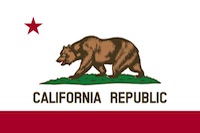Golden Bear Broadband wants $119 million from the California Advanced Services Fund (CASF) to build 1,000 miles of fiber backbone and lease 1,200 miles more in 16 northern California counties. That’s the real Northern California, (mostly) beyond the urban reach of the Bay Area and Sacramento region.
It’s not crazy talk. The Digital 395 project in eastern California, paid for by the federal stimulus program and CASF, is similar in size, cost and population density. I worked on a CASF-approved proposal for the central coast that was in the same ball park. Working with U.C. Santa Cruz, Sunesys is proposing a scaled down and better backed version for Monterey and Santa Cruz counties in the current CASF round.
Golden Bear’s problem is in the funding model, which (not coincidentally) appears to be pretty much the same as Digital 395 and our erstwhile central coast project: substantially all the up front cash comes from grants. A big rural fiber network is a long term investment, with a return that’s hard for private capital to square with its significant risk.
Depending on the split between under and unserved areas, CASF limits grant funding to between 60% and 70% of capital construction costs. Golden Bear is asking for 86% of costs right off the bat. And the remaining 14% ($19 million) does not look like it’s coming from cash investors.
Last summer, the project involved about the same mileage of new fiber construction and 200 miles more in leased capacity. The “total initial capital project cost” was pegged at $120 million. In the proposal that was submitted to the CPUC, the “capital cost” is $138.4 million.

Will a bear lay fiber in the woods?
So what changed? The earlier prospectus had a reasonably detailed project schedule that only talked about the 1,000 miles of new fiber. The latest version goes to some trouble to include leased fiber in construction plans.
There are perfectly valid reasons to move the value of a long term lease onto the balance sheet, while either accounting for it as an in-kind contribution or paying for it over time on a barter or operating cash basis. Looking at the information available, that appears to me to be what they’re doing. Details Golden Bear hasn’t published yet could prove me wrong, of course.
To approve this project, the California Public Utilities Commission (CPUC) will have to climb three conceptual hills: spend four-fifths of the money that’s left to CASF on one project, exceed the 70% cap they previously imposed and assume substantially all of the cash risk. That’s a hard case to make. Given the procedures, restrictions and scrutiny CPUC operates under, maybe impossible.
Tellus Venture Associates assisted with several CASF proposals in the current round, so I’m not a disinterested commentator. Take it for what it’s worth.
